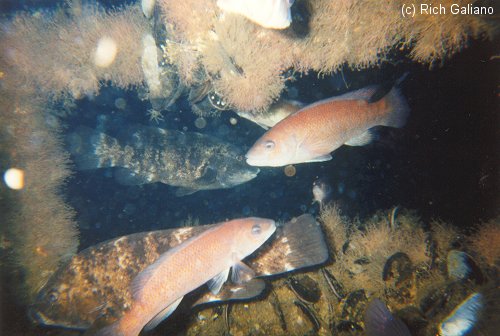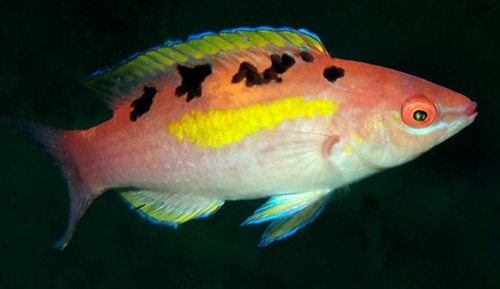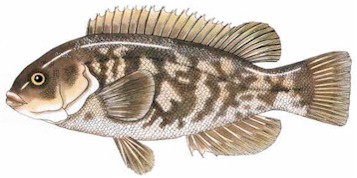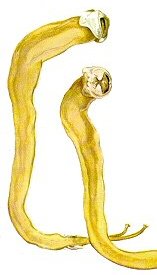Blackfish & Cunner

These fish are Wrasses, northern representatives of a widespread tropical family that includes Parrotfishes. Wrasses propel themselves slowly and precisely with their pectoral fins, using the tail only in emergencies. Tropical Wrasses feed on coral. Lacking this, their northern cousins feed primarily on mussels and other shellfish.

People pay big money to see fish like this in the tropics. We have them right here!
US Fish & Wildlife Service Species Profile




